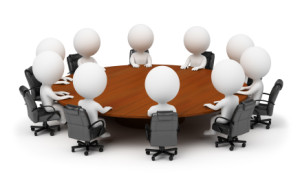Good website planning is fundamental to developing a well designed and effective website.
A website is your on-line brochure
 A website is a very cost effective way of promoting your business. From an initial cost starting around $500 and an annual webhosting cost starting from about $60 per year including a Domain Name, you can be promoting your business and products on the Internet. It is your Yellow Pages advertisement but at a much lower cost and with a lot more information.
A website is a very cost effective way of promoting your business. From an initial cost starting around $500 and an annual webhosting cost starting from about $60 per year including a Domain Name, you can be promoting your business and products on the Internet. It is your Yellow Pages advertisement but at a much lower cost and with a lot more information.
What is the purpose of your website?
It is important to know what the purpose of your website is. What are your goals? What do you hope to achieve?
The answers to these questions will help define where we go from here in designing your new website and if you understand this, it will save you a lot of heartache, time and money during the design and building of the website.
Map out your structure
When you are clear on the goals of what you want from your new website, it is worth taking the time to work out a site structure. What web pages do you want? Don’t worry about content yet, that will come later. Just think of the information you wish to convey and how you would like to present it. Have a look at other websites, your competition perhaps and see what appeals to you.
Websites usually consist of web pages. Each webpage will display certain information.
Here are a few suggested pages in no particular order to help you get started. The choice is up to you.
- Home page or landing page(essential). The Home Page is the landing page where your visitors will first visit your site.
- About page
- What is the website about, products, services and people.
- Contact Page or details. (essential)
- Contact details, phone, email, any text or notes.
- Services Page
- Information on your company, services and products.
- Gallery Page
- A gallery or product page of your work.
- Blog Page(can be the Home page)
- Regular entries of commentary.
- Description of events and what you have done or are doing.
- Entries are displayed in reverse chronological order.
- Focus on what your website/business is about, remember to include your keywords where you can.
- Interactivity.
- Testimonial Page
- Where others provide positive feedback about your products and services. Nice to have.
Every page should have a purpose.
Being clear at this early stage about how you want the site structured can save you a lot of time and money down the track and avoid costly redesigns.
Laying out the pages
It’s a good idea to give some thought to how you want your webpages to look. This is the perfect time to play around with as many ideas as you can while it is still easy to do so. The website structure will have influence the final design but don’t be afraid to try something new. That said, 90% of websites have a certain basic structure because it works. People browsing expect to find certain things in certain places. For example, people expect to see a menu either on the top or sides of a webpage. The last thing you want is a potential customer struggling to navigate around your new website.
Nearly all websites will have common layout elements, such as a header (often with a logo), some will have a showcase image or images at the top, a menu for navigating around your website, a main information page and a footer.
Good planning at this stage pays off, keeps your costs to a minimum and allows for a smooth design process.
We are here to help you through this process and can do it all if you wish, the choice is yours.
